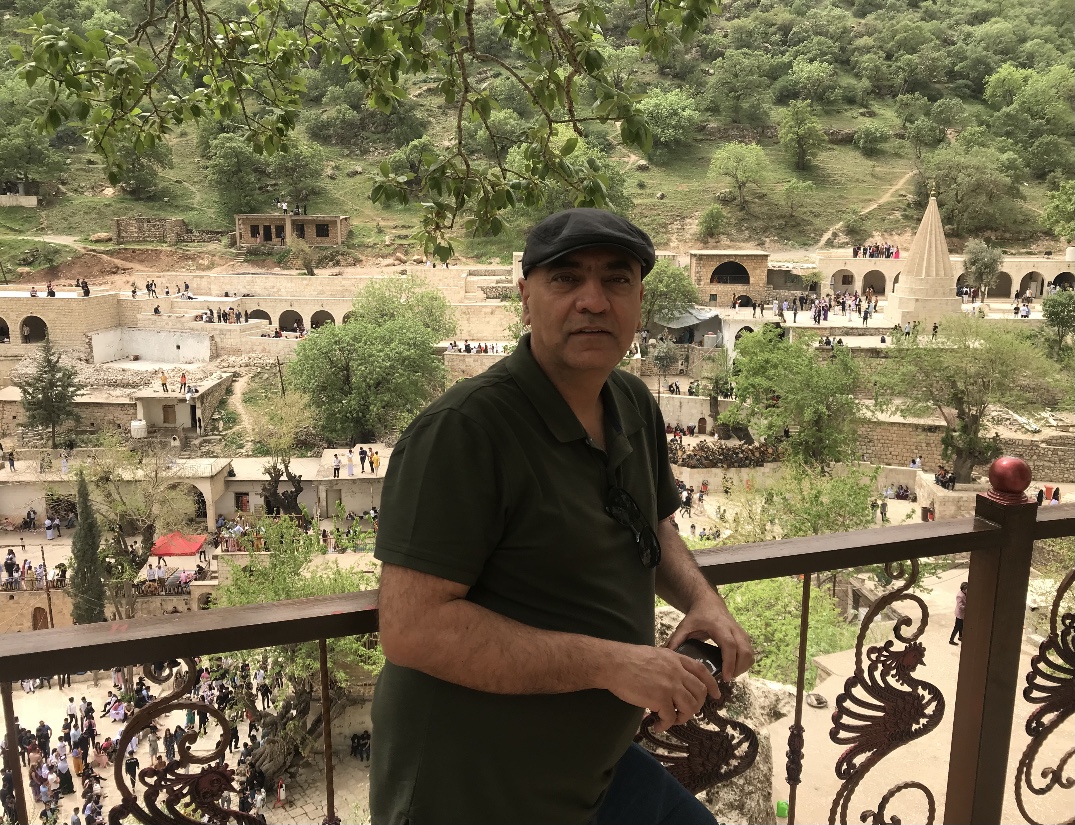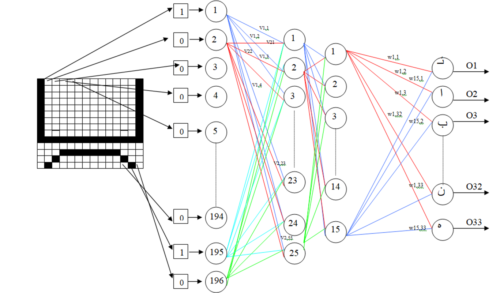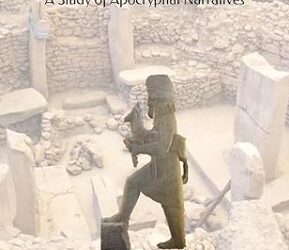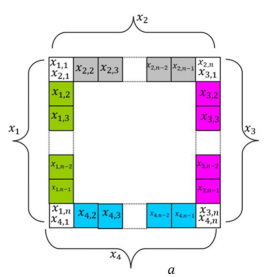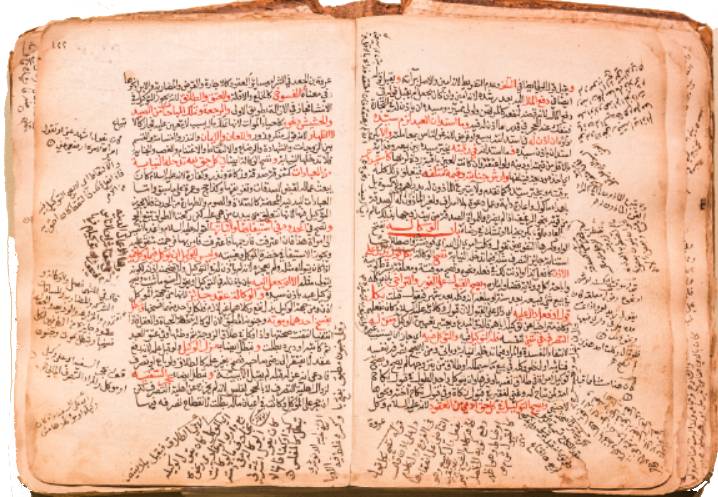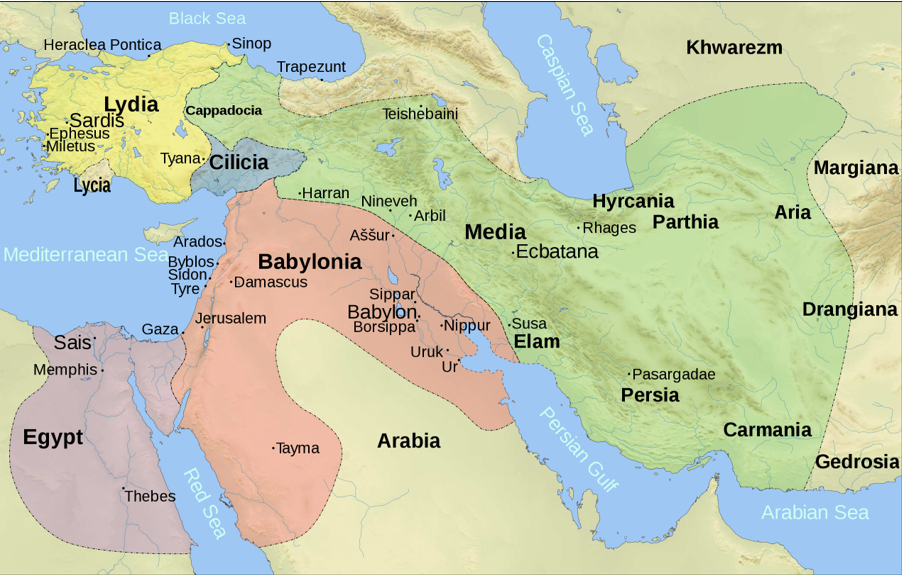Introduction
This essay reassesses the various Hadiths that have been relied upon through the centuries. A Hadith (pl. Ahadith) is a second primary source of Shari’a, which includes the sayings and deeds of the Prophet Muhammad. Most Muslims believe that the Quran and the Hadiths were never divided and that both are immutable and part of Shari’a.
The focus will be on providing a brief history of the collection of Hadiths by Imams, which was first begun by Malik bin Anas, followed by Ahmad bin Hanbil, after which six Imams, namely al-Bukhari, Mulim ibn al-Hajjaj, Abu Dawood, Al-Tirmidhi, al-Nasa’i, and ibn Majah, continued to collect Hadiths and record them in their books. The six books from these scholars are known as the ‘Sahih Sitta’, which translates as ‘The Authentic Six’.
In addition, this essay will also concentrate on the Hadith’s technical meaning according to the Quran and the Prophet’s speeches and appoint some of the Hadiths with classifications, such as good, sound, weak, and Qudsi.
A focus on those Hadiths in the Sahih Sitta, which are considered as sacred and the most reliable by Sunni Muslims, will form the main portion of this essay. Reassessing certain Hadiths and comparing them to the Quran to determine whether they are contradictory or not will also be endeavoured. This essay should not be considered an accusation against the Imams who originally classified any Hadiths that are found to be contradictory. It will attempt to discover whether these particular Hadiths were fabricated and if so, will question whether they were fabricated by the Imams or the rulers of the Umayyad dynasty. In addition, this essay illustrates that some Hadiths have been adopted from other cultures that were occupied by Muslims.
In this short essay, a few sentences are quoted in verses and Hadiths by starting and ending with three dotes, as most of the Hadiths and verses of the Quran are very long. Alternatively, the number of Chapter and the verse of the Quran are merely written and the legal issue of the verse indicated.
Keywords: Hadith, Ahadith, Matin, Isnad, Hasan, Sahih, Sound, Weak, Qudsi.
The Term Hadith and its Literally
In the Arabic language, the word Hadith literally means new, recent, speech and ‘reports the news’. In technical terms, Hadith means any speech or conversation about a subject, deed, or attitude reported by the Prophet Muhammad that is transmitted through authorities to the public. The plural of Hadith is Ahadith and it consists from two parts – Matin and Isnad. Matin is the text of the Hadith, which contains a saying, deed, or report by the Prophet Muhammad, and Isnad is the chain of authorities who transmit the Matin to the public. In order to judge the authenticity of a Hadith, the Matin and Isnad must both be considered. In addition, a Hadith is also categorised based on the credibility of its Matin and Isnad.
A second technical term concerning Hadith is Sunnah. The difference between them is that a Hadith is used to report a statement made by the Prophet, while a Sunnah reports a deed done by the Prophet.
The Word Hadith in the Quran
The word Hadith is used in the Quran several times with a different meaning, but it mainly refers to reporting on a story or incident. For example, the verse Surah 51:24 includes the word in the question “has the Hadith of honoured guests of Ibrahim reached to you”. Here, the Hadith refers to the story of Ibrahim’s guests. In another verse of the Quran, Surah 79:15, the word Hadith refers to the story too. While in another verse, namely Surah 93:11, the word means discourse.
Personally, the Prophet Muhammad has used the word Hadith. He said, “May Allah brighten a man who hears a tradition (Hadith) from us, gets it by heart and passes it on to others. . . ” [9, Book of Knowledge, 26:10]
The Earlier Collection of the Quran and Hadiths
The early collection of Hadiths took place at least 120 years after the death of the Prophet Muhammad. Throughout the Prophet Muhammad’s life time, a single Hadith was not written or recorded; the verses of the Quran were not even fully written in one book. Some verses of the Quran were written on animal skins and palm leaves, those scripts were called Sahifa.[11, p.18] However, Hadiths come second to the Quran, which no one what so ever paid attention to, and to be written down in a codified book. In addition, there is a Hadith that refers to the Prophet personally asking to not write down his words.[11, p.23] Later on, Hadiths became a second element to the primary sources in Shari’a.
The great issue that the Quran is more reliable than other collections such as Hadiths is pointed out here. Firstly, many verses were written in Sahifa at the time of the Prophet, then a few years later, the full version was collected in one book while most of the companions were alive and could recite the verses.
Regarding the collection of Hadiths, it seems that the small portion of Hadiths collected that concern administrative and taxation issues were collected under the order of Caliph ‘Umar son ‘Abdd al-‘Aziz’s governance of Medina.[11, p.23]
After many years, the first well-organised codified book, Al-Muwatta was composed by Arab jurist, Imam Malik Ibn Anas, who was born in Medina in 93 A. H. (711 CE). He was one of the jurists who had good knowledge of the Quran and Hadiths. Following this, his teachings and explanations of the Quran and associated works became known as Maliki School. In regard to his work concerning Hadiths, his book comprises 61 chapters and each chapter is divided into subchapters. Each Hadith is numbered and he collected 1, 861 Hadith in total. He was followed by Abu Abullah Ibn Muhammad Ibn Hanbil, who was born in Baghdad (Iraq) in 168 A. H. (780 CE). He travelled to Hejaz, Tihamah, and Yaman. Imam Ahmed bin Hanbil collected 27, 647 Hadiths and arranged them in 14 chapters, with his collection known as Musnad Ahmad.[11, p.30]
Sahih Sitta followed these two important collections. Translating as ‘The Authentic Six’, these six books were compiled by six Imams. The first Imam was Abu Abd Allah Muhammad, otherwise known as ‘Imam Al-Bukhari’, who was born in 194 A. H. (810 CE). He continued this work after beginning to collect Hadiths at age 16. He travelled extensively to increase his collection of Hadiths, including to Iraq and the Arabian Peninsula. He devoted 16 years to examining 600, 000 Hadiths. He extracted only 7, 563 Hadiths and recorded them in his book, dividing them into 97 chapters, with each chapter divided into subchapters.[7, p.32] Following the work of Imam Bukhari, his student, Muslim ibn al-Hajjaj, who was born in Nishabur (Iran) in 204 A. H. (874/75 CE). He followed his teacher’s path, collecting Hadiths by travelling to Iraq, Syria, the Arabian Peninsula, and Egypt. His book, which is known as Sahih Muslim, contains 3, 033 Hadiths and is divided into 54 chapters. Again, each chapter is divided into subchapters. In these books, there was an overlap of approximately 1, 599 Hadiths.[10, p.32] The third book containing a collection of Hadiths is called Sunan Abu Dawud. It was written by Abu Dawud al Sijuistani, who was born in 202 A. H. He was a student of Ibn Hanbil and he collected 5, 274 Hadiths, dividing them into 43 chapters.[9.p.33] The fourth book in Sahih Sitta is Jami at-Tirmidhi, which was assembled by Imam Abu ‘Isa at-Tirmidhi, who was born in Termez (Uzbekstan) in 209 A. H. (824 CE). His book contains46 chapters and 4, 400 Hadiths. The fifth book was compiled by another student of Imam Al-Bukhari, Ahmad b. Shu’ayb al-Nasa’i, who was born in Nisa (Turkmenistan)in 215 A. H. (829 CE). In his book, called Sunan an. Nasa’i, 5, 700 Hadiths are divided into 52 chapters. The sixth book is Sunan Ibn Majah, which contains 4, 341 Hadith in 37 chapters. These were collected by Imam Muhammad bin Yazid Ibn Majah al-Qazvini, who was born in 209 A. H. (824 CE).
The Science of Hadiths
In general, all Hadiths consist of two parts, the Matin and the Isnad, which are examined by jurists to determine whether the Hadith is of Sahih grade or another grade. The grades of Hadiths fall into many categories and each classification has a name, such as Sahih, Hassan, and Weak. For instance, Ibn Salah illustrates 65 categories of Hadiths, providing an example for each category of Hadith and explaining how to distinguish one from the other.[5, p.2-4]
As this essay focuses on the reassessment of some Hadiths, some of these categories of Hadith and relevant terminology need to be explained:
- Sahih (Sound): This kind of Hadith’s Matin is transmitted via a chain of transmitters without a break in the chain and all transmitters have the same level of purity, high pious, authenticity, reliability and good memory. In addition, the Matin is not contradictory to the beliefs of Islam and its practices.[3, p.5]
- Hassan: This Hadith is the same as the above Sound, however one of the authorities’ memory is a little weak.[3, p.22]
- Da’if (Weak): Any Hadith that does not have the condition of both Sound and Hassan is considered to be a weak Hadith.[5, p.25]
- Hadith Qudsi: These are the 40 Hadiths that the Prophet quoted from God’s Speech and narrated from his words.
Reassessing the Hadiths
As stated before, the fact that Hadiths were collected many years after the death of the Prophet and his companions led to doubt that all Hadiths passed on to the Imams who evolved to collecting these Hadiths were credible. Although the Imams examined all of the Hadiths and shifted many Hadiths from authentic to weak, all Hadiths still need to be reassessed. This is essay will re-examine a few Hadiths to ascertain whether they are suitable to the core of the Quran and the personality of Muhammad, who has the attribution of the prophecy.
Hadith: God commands to Fight
All jurists and scholars of Islam believe that any word in the Quran has been used correctly by God and has a purpose and according to the Quran, in Surah 4:82, if the Quran was not sent by God, then you will find a contradiction. Here, I concentrate on the word used in the Quran that means I am commanded, omirtu. To quote a sentence of Verse 15 of Chapter 42, God commands the Prophet to say, “. . . I believe in the Book which Allah has sent down; and I am commanded (omirtu) to judge justly between you. . . ” It is made very obvious that the Prophet was commanded by God to judge those of the Jewish and Christian faiths. This word has never been used in any verse to command the Prophet to launch war. However, the same word has been used in Hadiths in a different manner. In Sahih Bukhari says, “I have been commanded (omirtu by Allah) to fight people (al-nas) until they testify that there is no true god except Allah, and that Muhammad is the Messenger of Allah. . . ”[1, No.25] This Hadith was then narrated by four other Imams, namely Mulim ibn al-Hajjaj, Al-Tirmidhi, al-Nasa’i, and Ibn Majah.
In this Hadith, there is an important aspect to be discussed. In the Quran, God commanded the Prophet to judge Judaism and Christianity and we cannot find any mention of violent, while in this Hadith, God commands the Prophet to fight against all people who not believe in him and his messenger, with those of the Jewish and Christian faith being included in the people (al-Nas).
This Hadith was also used by Imam Ahmad bin Hanbil, but it contained some different words and was in a different format. His was seen as a more reliable Hadith by the majority of Muslims, especially by fundamental Islamic groups such as Salafist. By re-examining this Hadith in line with the Quran and history, we will find that this Hadith has been fabricated by rulers eager to have Hadiths such as this one in order to encourage Muslims to Jihad. According to the history of Islam, when Muslims in the Arabian Peninsula conquered Mesopotamia, the situation was unstable for many years. Thus, the caliphs needed verses in the Quran that would encourage Muslims to continue Jihad. If no verse was found in the Quran, there is no doubt that they needed to fabricate a Hadith in name of the Prophet. Schacht states that the administration of the Umayyad launched war against the Byzantines to collect the resources from those people and Arabia benefited from it.[12, p.23-4]
This is not the only example related to encouraging Muslims to Jihad. At the time of the third Caliph, Othman, a civil war began due to corruption stemming from accusations that Othman appointed his relatives as administrators and gave them high level positions in power. On one occasion, Othman sought advice from Mu’awiyah, Abdullah b, Abi Sarh, Sa’id bin al-‘As, and Abdullah bin ‘Amir on what he should do to those people who stand against him. Abdullah bin ‘Amir said to him, “My advice to you, command them to undertake to Jihad, then their attention goes away from you, then every one of them will concentrate on themselves, their animals, about saddle sores of his pack animal, and about the lice on his scalp.”[2, V:XV, 136]
In other words, Jihad was necessary during this period of the time and we can presume that those Hadiths that are related to Jihad have been fabricated.
Hadith: Allah is Time
There are two verses in the Quran that mention the word al-Dahr, which refers to time. These two verses are very clear and do not require any explanation or interpretation.
The first verse says, “We shall die and we live, and nothing but Time(al-dahr) can destroy us.” [Quran, 45:2]
The second verse says, “Has there not been over Man a long period of Time(al-dahr), when he was nothing, (not even) mentioned?”[Quran, 76:1]
In both verses, the word al-dahr means time and there is no indication that time is attributed to God. However, in one of Qudsi’s Hadiths, God says I am time. This Hadith was repeated and paraphrased with different Isnad, but in all these Hadiths God says I am time. In total, Hadiths that indicate that God is time appear 12 times in Sahih Sitta, five times by each al-Bukhari and Muslim. In addition, Malik and Abu Dawud also mentioned it once in each of their books. Moreover, in the book of Musnad Ahmad, this Hadith was narrated several times.
It is likely that time being attributed to God was adapted from other religions. After the death of the Prophet, Muslims conquered the Roman and Persian empires. In Rome, Christianity was the official religion and the Zoroastrian faith was present in Persia. The Persian Empire controlled the land of Mesopotamia and was present in Iran and many religions were practised freely, including Judaism, Christianity, Mani, Zurvani, Mithraism and Ezidi. According to Mary Boyce,[13, p.96] Zurvani was “a Zoroastrian heresy, evolved probably by Persian Magi in the late fifth B. C. , in which Ahura Mazda and Angra Mainya were seen as twin sons of time, and Zurvani and this heresy was adopted by the late Achaemenian Kings and was adhered to by their Persian successors, the Sasanians”. However, when the Sassanid Empire collapsed during the rule of the second Caliph, ‘Umar Ibn Khatab, these religions and heresies were not faded out in these terrorisers. Therefore, Arab Muslims associated with non-Arabs in different ways and they adopted cultural, linguistic, and even theological ideas. For instance, Schacht notes that stoning as the punishment for adultery is not in the Quran, but has been adopted from Mosaic Law. In addition, he explains that the two Arabic words, ‘Liss’, meaning thief, and ‘dallas’, meaning to conceal a fault, are Greek and Latin, respectively, and entered the Arabic language.[12, p.9-15] God, Allah in Islam, has certain attributions in the Quran, for instance merciful and well known; however, time is not one of them. Moreover, it is stated in the Quran that “nothing whatever like unto Allah”.{Quran, 42:11] It is possible that this Hadith was fabricated due to Muslims interacting with people originating from Mesopotamia.
Hadith: Kill Apostasy
There are three categories of punishment in Islam for criminals: Huddud (Limit), Qisas (Retaliation) and Tizir (Discretionary Penalties). In Huddud, there are seven punishments for seven different crimes; one of these crimes is apostasy. The punishment for apostasy is based on a Hadith mentioned in Al-Bukhari that narrates the Prophet as saying, “Who changed his religion kill him.”[7, No.3017] This Hadith was repeated five times in Sahih Sitta by an-Nasa’i, another two times by al-Bukhari, and once by Ibn Majah.
However, there is no verse in the Quran that refers to apostasy. In contrast, the Quran says that there is no compulsion in religion.[Quran, 2:256]
However, some jurists find the evidence robust and stick with this Hadith rather than the Quran. They have two evidences. Firstly, regarding the ‘no compulsion in religion’ verse, they believe that this verse offers the faith of Islam to non-Muslims, who can embrace it or not. In other words, non-Muslims are free to convert to Islam or not, but if they embrace Islam, then they cannot convert from Islam as this will be considered apostasy. Secondly, they point to another verse of the Quran that says, “If anyone desires a religion other than Islam, never will it be accepted of him; and in the Hereafter he will be in the ranks of those who have lost (all spiritual good).”[Quran, 3:85]
It is obvious that this verse refers to the Hereafter and that God does not accept any other religion than Islam, but it does not indicate that Muslims must kill those committing the sin of apostasy. In the Quran the words are very clear. Why did jurists divert from the original primary source, which is the Quran? Undoubtedly, the answer to this question is that it is a matter of politics, rather than faith as Schacht believes. He states, “Their main concern, it is true, was not with religion and religion law but with political administration.” [12, p.23]
In my view, if God implied killing those guilty of apostasy in the Quran, why did He not clearly disclose it? It would have been very easy for Him to include a clear verse that tells people that the punishment for apostasy should be death.
Hadith: Sensitive Issues
As illustrated above, Sound Hadith’s Matin and Isnad do not have any defects. However, I can illustrate that the Matin contradicts the Isnad, not the Quran. In Sahih al-Bukhari, a few Hadith have a defect in their Isnad, not concerning the authenticity of the transmitters or a gap in the chain, but in terms of another issue that might not have even been noticed yet. In one of the Hadiths narrated from ‘Urwa, who was a Tabi’i and heard from his father that ‘Aisha, who was a wife of the Prophet, used to comb the Prophet’s hair while she was on her period.[7, No.294, No.295] The same Hadith in a different format and Isnad were narrated by ‘Urwa. Then, another Hadith by ‘Urwa, which was once again narrated directly from ‘Aisha also indicated a woman’s period.[7, No.303] There are three other Hadiths narrated by ‘Urwa from ‘Aisha that mention her talking about her period on different occasion.[7, No.316, No.322, No.327] In addition, another Hadith is narrated by ‘Urwa and another woman from ‘Aisha.[7, No.324] While there are two other Hadiths that are sensitive that ‘Aisha directly transmitted to a man named ‘Ukrama.[7, , No.309, No.310] In addition, she narrated another Hadith to Mujahid,[7, No.312] and another two to Hisham.[7, No.314, No.317]
Here, we can see that this sensitive matter passed from a woman to a man. If we go back 1,400 years and review the customs of the Arabian Peninsula, it would have been impossible for a woman to talk to a man about such a sensitive issue. It would even be impossible nowadays. While we can see in another Hadith covering a similar scenario that there is a woman in between Aisha and the companion. This Hadith could be true as it is normal for women to have a private conversation and for this conversation to somehow be passed on to a man, for example a woman may tell her husband private things and then her husband my pass these on to someone else, but such a sensitive conversation would not be allowed between a woman and anyone else other than her husband in the Arabian Peninsula.
The majority of Hadiths relating to the status of women during their period was narrated from ‘Aisha to a man, with some of them imparting that during this time the Prophet approached his wives.
For instance, two Hadiths attached to the Prophet’s attitude are surprising. One of them is confirmed by Shekh Albani and thus, is Sound. This Hadith indicates that the Prophet approached his wives. In the first Hadith ‘Aisha told Ikrimah[9, No.272] and in the second, she told Jumai’ bin ‘Umair in Sunan an-Nasa’i.[14, No.375]
The first Hadith cannot be found to be reasonably Sahih, as there is a break in Isnad, because he heard this from one of the wives of the Prophet, and who was she? In addition, how would it have been possible for the wives of the Prophet to share private matters with Ukrama? Secondly, it is not suitable to ascribe this attitude to the Prophet for a number of reasons. Firstly, the Prophet had nine wives, or 11 according to some historians, at the same time. He would have been able to wait until his wife’s period has terminated before approaching her, as he was not desperate and it is impossible that all of his wives menstruated at the same time. Secondly, in reference to menstruating women, the Quran states, “Keep away from women in their courses, and do not approach them until they are clean.”[Quran, 2:222] Thirdly, the fact that the Hadith uses the word, ‘yubashir’, which has two meanings, either embracing or sexual intercourse, raises questions. It is not clear which meaning the Hadith subscribes to. Surprisingly, Shekh Albani states that this Hadith is Sahih.
The second Hadith raises the same question: how could ‘Aisha have spoken to ‘Jumai in this way?
Moreover, in Sahih al-Bukhari, Hadiths similar to the ones above were narrated by Al-Aswad, who heard the Hadiths from his father.[7, No.299] If we take this Hadith on its own, we find a defect in Isnad, as we do not know who al-Aswad is. However, another Hadith that follows this Hadith in the same manner and concept, gives us a clue to who Al-Aswad is when it mentions Abdur-Rahman bin Al-Aswad. Thus, it becomes clear that the transmitter was Al-Aswad bin Yazin al-Nakha’i. According to Sharazuri[5, p.287], Al-Aswad bin Yazin al-Nakha’i was an excellent follower. He died in the 75th year of Hijra in Kufa.
However, we are making an assumption that Al-Aswad is meant by son Yazid Nakha’i, through his son, based on the Hadith’s similarity. We could be confusing him with another two people that Al-Bukhari relied on, namely Abu Salam al-Aswad al-Kufi, who was a follower (Tabi’i) and died in the year 84 al-Hijra[5, p.175] and Al-Aswad bin Khalaf, father of Muhammed.
Both Al-Aswad Nakha’i and Abu Salam Al-Aswad al-Kufi were followers, never saw the Prophet and died in Kufa. There is no indication that both lived in Medina and met Aisha, so how did they share the Hadith directly with ‘Aisha?
In addition, regarding Al-Aswad bin Khalaf, father of Muhammad, in some Hadith, Bukhari relied on him. Thus, the Hadith is considerably weak, as him and his son are not recognised by historians, as stated in ‘zawaid musnaf’ by Abdulrzaq al-sani’i.[15, 303]
Two more focus on sensitive issues ascribed to the Prophet and have been confirmed as Sound Hadiths just because the transmitters are pure people. According to al-Shahrazuri,[5, p.221] there are seven jurists of Median, namely Sa’id b. al-Musayyib, al-Qasim b. Muhammad, ‘Urwa b. al-Zubayr, Kharija b. Zayd, Abu Salama b. ‘Abd al-Rahman, ‘Ubay Allah b. ‘Abd Allah b. ‘Utba, and Sulayman b. Yasar.
Two Hadiths[7, No.294, No,305] were narrated by Al-Qasim, who is the grandson of the first Califa, and Abu Bakir, the nephew of Aisha. He was considered to be one of the great jurists, however we have to consider the fact that he was born in the year 36 or 38 of Hijra and Aisha died in the year 58 of Hijra, while Aisha’s death was only in the year 20 or 22; thus, would he have been able to get the Hadith from ‘Aisha directly? Secondly, although Aisha was her aunt, would she have been able to talk to her nephew about these private matters? I believe that the customs of the time would never have allowed this.
Moreover, another Hadith[7, No.324] that is similar to these Hadiths is mentioned, however this time, the Hadith is narrated by the Hafsa daughter of Umar Ibn Khatab, another wife of the Prophet; the sensitive Matin was passed directly to a man. In addition, the Isnad of this Hadith has another defect; this Hadith was narrated by Ibn Slam from Abduwahab from Ayub from Hafsa. There are only three transmitters. Is it impossible for this Hadith to have reached Imam al-Bukhari by three generations? I believe there is an absence of authentic evidence. Therefore, both this Hadith’s Matin and Isnad have defects, but it was confirmed by al-Bukhari as a Sound Hadith.
Hadith: Attacking the Personality of the Prophet
There is a verse about the Prophet and his family that very obviously depicts their purity. According to the Quran, God purified his family from the sin [Quran, 33:33] and in a verse in the Quran God states that the character of the Prophet is a beautiful pattern.[Quran, 33:21]
In addition, it is important to assess the matter that God always observed the Prophet as not carrying out any wrong doing or sin. In the biography of the Prophet it states that one day the Prophet did not pay attention to a blind man, after which God sent a Surah for the Quran [Quran, 80:1-4] and the verses alerted the Prophet. This biography and the Quran illustrate to us that the Prophet was always under the guardianship of God and that He never let him divert from his good character.
A very long story about a Hadith in Sahih Al-Bukhari [7, No.371] depicts how after Muslims invaded the Jewish in Khaibar, succeeded, and then took them captive, Dihya, one of the Prophet’s companions, came to him and asked him to give him one of the slave girls from the captive women. The man took Safiya, daughter of Huyai. Another companion came to the Prophet and said you gave Safiya to Dihya, but this woman is only suitable for you as she is chief mistress of the tribes of Quraidha and An-Nadir. Thus, the Prophet took Safiya back from Dihya and married her the next day.
The text of this Hadith only attacks the personality of the Prophet. How on earth is someone thinking about getting married in these circumstances? Only one day had passed since the bloodshed of both Muslims and Jewish people, with a lot people being killed in the battle. This Hadith only propagates the belief that the Prophet only thinks about marriage no matter the situation he was in. In addition, the Quran clearly states [Quran, 2:234] that a man cannot marry a widow until four months and ten days after the death of her husband.
If the Prophet went ahead with this marriage, he contradicted the Quran and God did not warn him, however this issue is much bigger than the occasion when he turned his face from a blind man and God alerted him in this instance!
Hadiths Abrogating (Nasikh) the Verse of the Quran
For this section, Nasikh (abrogating) and Mansukh (abrogated) need to be explained. According to the Quran and Surah an-Nahl101, if God abrogates or replaces a verse with a new verse, the new law will abrogate the previous law. Therefore, in Islam, there are three categories of Nasikh and Mansukh:
- First: Verses that are abrogated and cannot be found in the Quran. No laws are taken from those verses.
- Second: Verses that are abrogated and can be found in Quran, but are invalidated.
- Third: Verses that were erased and cannot be found in Quran, but are active and used by Shari’a.
It is clear that these three categories relate to God’s law based on the Quran and there is no indication that the speech of the Prophet can abrogate any of God’s laws and that he has the capability to abrogate the rule of God. However, two Scholars of Imam Hanafi and Hanbali believe that the Prophet is capable of abrogating the verses of the Quran. Their evidence is based on a verse in the Quran that says whatever the Prophet said is from God.[Quran, 53:3-4] This means that his speech is God’s speech. However, Imam Shafi’i and Imam Ahmad have contrasting opinions.
I believe, if the Prophet was able to abrogate the rule of God based on the above verse, then the question that arises is: how do we trust Hadiths belonging to his deeds and speech when there is not a single piece of script left by the Prophet.
Fabricated Hadiths
It should be noted that, after the death of the Prophet, Hadiths were fabricated by companions for their benefit. During the conflict between Ali bin Abi Talib and Mu’awiyah b. Sufiyan, each of them made up a false Hadith that they could use against their enemy. Ali said that he heard the Prophet say, “If you see Mu’awiyah ascend my pulpit, then kill him.” Mu’awiyah said that he heard the Prophet say, “It is as if Mu’awiyah were sent as a prophet because of his forbearance and his having been entrusted with God’s word.”[11, p.70] This shows how easy it is to forge the Matin of a Hadith. It also seems is if Abu Hurarya fabricated many Hadiths, as Umar Ibn Khatab said to him, “Indeed, I say let the Prophet’s words alone or indeed I’ll send you back to the lands of [your tribe] Daws!” Later on, the scholars also fabricated Hadiths for their benefit, as they said that the Prophet said, “The Scholars are the inheritors of the Prophets.”[11, p.71, 74] Not only were Hadiths’ Matins fabricated, but their Isnad was also faked as well. For instance, the Hadith, “he who carries weapons against us [Muslims] is not one of us” was narrated by ‘Amr b. ‘Ubayd, who said that he heard this from his teacher, al-Hassan al-Basri, and that his teacher heard it from the Prophet. In fact, he did not hear it from his teacher, but from someone else. He used the name al-Hassan al-Basri in order to support his evidence.[11, p.75] It is well illustrated by these examples that fabricating a Hadith was not difficult or impossible.
Hadiths and Sira al-Nabawiya (The Biography of the Prophet)
An important question arises: why can’t we find a single Hadith in the biography of the Prophet, which was written by Ibn Hisham and based on Sira by Ibn Ishaq. In many cases there are similarities in terms of the story and the concept of Islam, but the Hadiths in Sahih Sitta are completely different to the text in Sira. In spite of the fact that there are thousands of poems which were recited by the people during the time of the Prophet and the ignorant era, especially the poems of Hasan son Thabit and the poems of the six aunts of the Prophet and Grandfather of the Prophet, there is not a single Hadith of Qudsi in Sira. Whilst, those poems much harder to be recited than the Hadiths. In Sira, many interesting stories about the Prophet are mentioned, but Hadiths are not mentioned. The only reason why may be that there is not a continuous chain of transmitters, while it is obvious that Sira was written at an earlier date.
The first Sira written was by Ibn Ishaq. His work has not survived, but has reached us through Ibn Hisham. Ibn Ishaq was born in the year 85 A. H. (703 CE), 10 years before Imam Malik bin Anas, who collected the first Hadiths, as mentioned previously. After checking all the Isnads of the book of Malik, Muttah al-Malik, no trace of Ibn Ishaq was found. Why Imam Malik never relayed on the Sira by Ibn Ishaq is a mystery.
In addition, those who were relied upon for Hadiths are not often mentioned in Sira. For instance, Abu Hurarya narrated 5,300 Hadith, but he only became Muslim in the last three years of the age of the Prophet and he was a judge in Bahrin and did not see the Prophet for a long time, and in Sira, we rarely hear about the role of Abu Hurarya. Ibn Abas narrated 1,700 Hadiths, but he was 9 or 12 years old when the Prophet died. Anas bin Malik served the Prophet from 10 years of age, but by the time he was 19, the Prophet had died. He narrated 2, 300 Hadiths. ‘Aisha, a wife of the Prophet, narrated 2,200 Hadiths, while Ibn Umar narrated 2,600 Hadiths.
Meanwhile, the father of Ibn Umar was the second successor after the Prophet and was a close companion of the Prophet and his father-in-law and he only narrated 539 Hadiths. Of those Hadiths, only 26 were agreed to and overlapped with those of Imam al-Bukhari and Imam Muslim. Of those that overlapped between them, Imam al-Bukhari narrated 34 without Imam Muslim and Imam Muslim narrated 21 without Imam al-Bukhari. The rest of the Hadiths were narrated by different sources of Sahih Sitta.
Furthermore, ‘Aisha, who was one of the Prophet’s wives, objected to Hadiths from other companions, while his father, who was the first successor after the Prophet and a close companion, only narrated 142 Hadith from him. Of these142 Hadiths, only six were agreed upon and overlapped with those of Imam al-Bukhari and Imam Muslim. Apart from this overlap between them, al-Bukhari narrated 11 without Muslim and Imam Muslim narrated one Hadith without Imam al-Bukhari. The rest of the Hadiths were narrated by different sources of Sahih Sitta.
It should be noted that the Prophet spent every night with one of his wives and he had nine or 11 wives at once. This means that he spent a night with ‘Aisha three to four times a month and he was only with her for eight or nine years before he died, while the Prophet had been accompanied by Abu-Bakr since he was 20 years old and they were close friends. In addition, Abu-Bakir was the first man who believed in his prophecy. How can Abu-Bakir have only narrated a few Hadiths?
Another question that needs to be asked is: how did Imam al-Bukhari filtered the transmitters when there are five generations between him and the Prophet? If we believe that the companions were infallibles, there are still two generations between him and the Prophet that are not infallible. If he did not relay them to Ibn Ishaq, who was so close to the events at the time of the Prophet, why and how did he relay them to these two generations?
Lastly, there are many speeches by the Prophet that are shared in Sira that are extremely important and show how vital the wholesomeness of the Prophet during his missionary was, such as when the people of Mecca offered to make him a king if he left his missionary and he answered, “If they put the sun on my right hand and moon on my left hand I do not leave this faith.” However, this significant speech is never mentioned in any of the Hadiths in Sahih Sitta.
Conclusion
In conclusion, the Hadiths should be reassessed in line with the core of the Quran. The most important issue is that jurists should pay attention to the Matin of Hadiths, rather than the Isnad. There is no evidence of the purity and good memory of the transmitters. There are at least five generations between the Imams who wrote the books in the Sahih Sitta and the Prophet. We are certain of the purity and loyalty of the Imams, the Prophet, and his companions, however after three generations, we cannot be sure that they have the same attributions of the Prophet as Muslims believe that only the Prophet is infallible and without any faults or errors. Furthermore, some Hadiths are not seen as an important legal issue and are useless.
Consequently, there are four considerable points that should lead us to believe that the Hadiths were fabricated:
- Firstly: The conflict between the Muslims themselves fell into two main orthodoxies, Sunni and Shi’a, and each of them tried to fabricate Hadiths for their own benefit. Their main concern was not religion, but politics. Due to the long length of this conflict, the followers of one of these orthodoxies certainly kept his faith, but pretended to have an opposite faith, so he could easy go undercover and fabricate a Hadith in order to attack that sect. For example, in terms of when Shi’a was against ‘Aisha, the followers of Shi’a probably pretended that they were Sunni and then fabricated a Hadith attacking ‘Aisha.
- Secondly: There have been conflicts between Muslims and non-Muslims due to the occupation of the land of non-Arabs by Arab Muslims. Those who converted to Islam under pressure might fabricate Hadiths for revenge. According to the history of Islam, in the earlier conquests of these lands, rebellions raised up against the Muslims for many years until the era of the second Abbasid caliphate, Abu Ja’far al-Mansur. In other words, those nations did not embrace the faith in earlier Islam, many people kept their faith secret or paid Al-Jiziya to keep their faith. Thus it is easy for those people who were undercover to fabricate the Hadiths.
- Thirdly: As mentioned in the above point, the people in these countries kept their faith and the Arab Muslims and those nations adopted new cultures, as they became integrated with each other. Bear in mind that these cultures somehow evolved from these faiths. In addition, not all fabricated Hadiths were published, due to revenge or on purpose. In other words, the Imams would have been confused and they could not have segregate the mixed cultures and distinguished the fabricated Hadiths from the authentic Hadiths, for example the Hadith of al-Dahr was adopted from Zurvani and should not be attributed to the God of Islam.
- Fourthly: The conditions in Mesopotamia and Levant changed dramatically due to the destruction of two empires – the Persian and the Roman. Due to ongoing wars between Muslims and non-Muslims, Muslim leaders were eager for Hadiths to be seen to encourage Muslims to continue fighting the wars against other nations. It is here that we find Hadiths concerning Jihad that contradict the Quran.
Bibliography
[1] ‘Abd al-Hadi al-Fadi, Introduction to Hadith, trans. Nazmina Virjee, ICAS Press, 2011.
[2] Al-Tabari, The History of al-Tabari, (XV Vols), tr. R. Stephen Humphreys, State University of New York Press:1990.
[3] Dr Rafiq Ahmad, Ra’fatul Bari, India: Adam Publishers & Distribution, 2006.
[4] Ibn al-Salah al-Shahrazuri, An Introduction To The Science of the Hadith, trans. Dr. Eerik Dickinson, Garnet Publishing, 2006.
[5] Ibn al-Salah al-Shahrazuri, tr. Dr. Eerik Dickinson, An Introduction To The Science of the Hadith, Garnet Publishing, 2010.
[6] Ibn a-Maja al-Qazwini, Sunan Ibn a-Majah, tr. Tufail Ansari, (5V), India: Kitabbhavan, 2013.
[7] Imam al-Bukhari, Sahih Al-Bukhary, tr. Dr. Muhammad Muhsin Khan, Saudi Arabia: Darussalam, 1997. 9 V
[8] Imam an-Nasa’i, Sunan An-Nasa’i, tr. Nasiruddin al-Khattab, Saudi Arabia: Darussalam, 2017, (6 V).
[9] Imam Hafiz Abu Dawud, Sunan Abu Dawud, tr. Yasir Qadhi, Saudi Arabia: Darussalam, 2008, (5V).
[10] Imam Muslim, Sahih Muslim, tr. Abdul Hamid Siddqi, India: Kitabbhavan, 2012, (5V).
[11] Jonathan A. C. Brown, Hadith Muhammad’s Legacy in the Medieval and Modern World, Oneworld Publications, 2009.
[12] Joseph Schacht, An Introduction to Islamic Law, Clarendon Press,1984.
[13] Mary Boyce, Textual Sources For The Study of Zoroastrianism, Manchester University Press, 1984.
[14] Imam an-Nasa’i, Sunan An-Nasa’i, tr. Nasiruddin al-Khattab, Saudi Arabia: Darussalam, 2017, (6 V).
Arabic Sources:
[15] Imam AbduAlraziq, Zawaid Musnaf ‘Ala al-Kutib al-Sita min Al-Ahadith all-Marfu’a, Published by Aum al-Qura, 1997(Studied and Research undertaken by Student of PHD, Abdul-Rahman Ahmed)
[16] https://www.almaany.com/ar/dict/ar-ar/ ازلام/
Note: The essay was submitted, December 2017, to University of Aberdeen, Department of Divinity, History and Philosophy as part of the requirement of the MLitt in Islamic Studies.
By
Mako Sawin
Download with PDF
